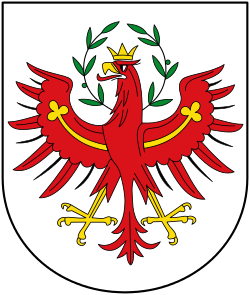Tyrolean Landtag Tiroler Landtag | |
|---|---|
| 22th Tyrolean Landtag | |
 | |
| Established | 1919 |
| Leadership | |
Governor | |
| Structure | |
| Seats | 36 |
 | |
Political groups | Government (21) Opposition (15) |
Length of term | 5 years |
| Elections | |
Last election | 25 September 2022 |
The Tyrolean Landtag (German : Tiroler Landtag) is the assembly of the state of Tyrol, Austria. [1] [2] [3] [4]
Wikimedia Commons has media related to Landtag of Tirol .